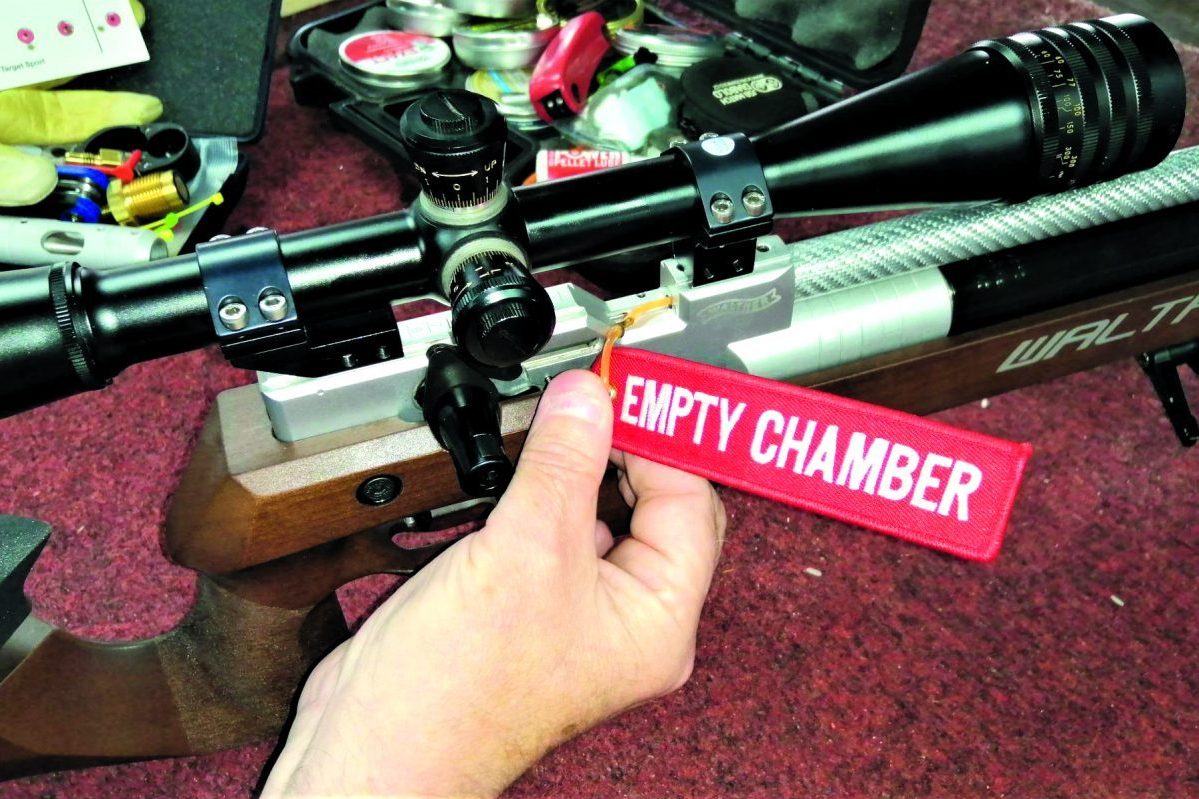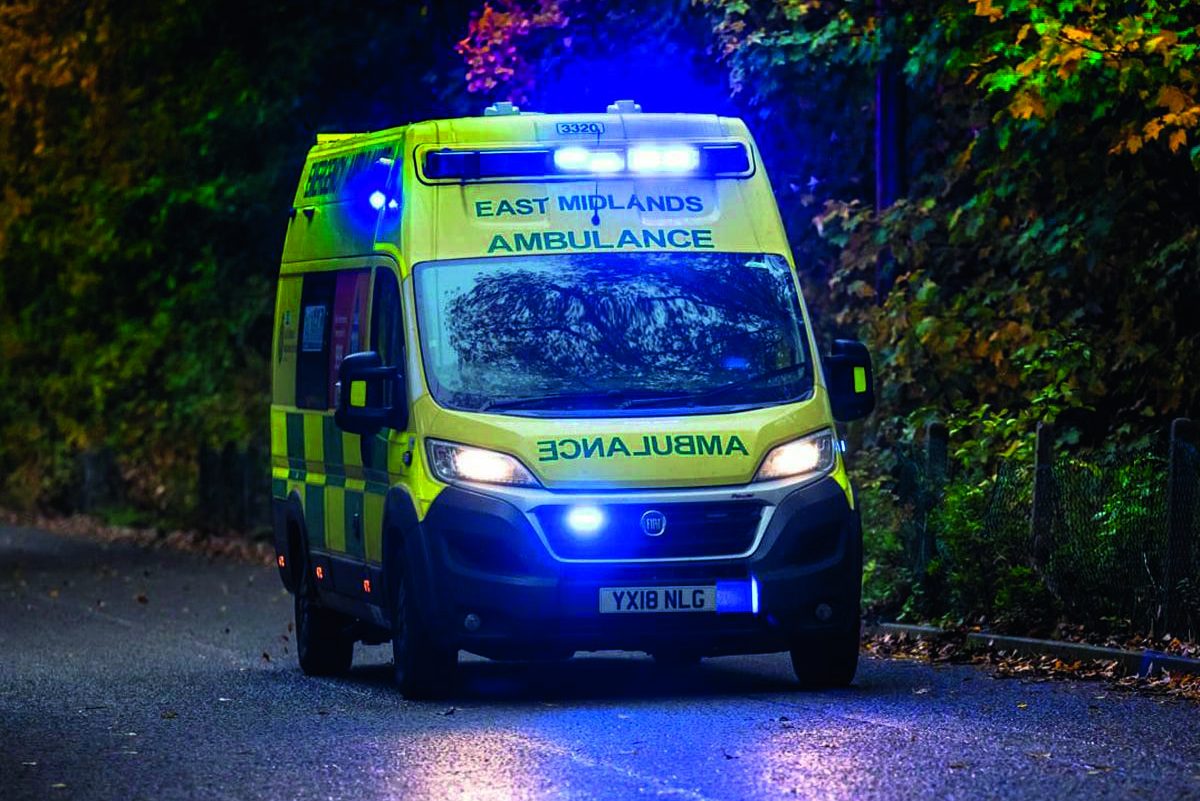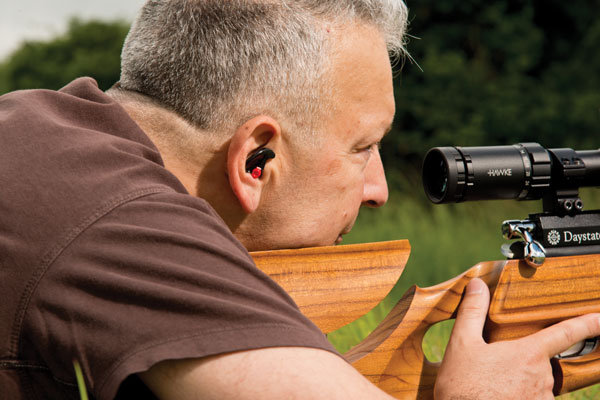Why airgun safety is so important at the range
Andy McLachlan offers a reminder to shooters of all levels of experience that airgun safety is a matter that should never be taken lightly

This is Andy’s favourite breech flag – it’s easy to see from a distance so fellow shooters can rest assured that the gun is safe
I thought I would remind us all how important it is that we follow airgun safety rules when spending time at the range, whether that might be down at the official club venue or for that matter in the confines of your own garden.
But before I continue in the safety vein, I was delighted to read Keith Jones’s letter in issue 163 entitled Benchrest For All. Keith has managed to expand a forum-based shooting competition for benchrest competition on the Air Gun Forum platform. Keith advises us that he purchased his first rifle four years ago, and since taking over the benchrest competition section has grown participating members by a significant margin. The participants all print off a monthly scorecard for competition purposes which, following completion, is marked by him and other members for the monthly scores.
Importantly, Keith tells us that various ages of shooters have become involved, which of course can only be a good thing as we all pass the word of how much enjoyment that shooting activities can bring to current “unbelievers”.
The competition caters for varying ranges and will allow shooters who are unable or do not wish to attend regular shooting ranges for their shooting.
- Click here to find the best airgun range near you, the best air rifle targets or everything you need to know about shooting your air rifle in the back garden.
Safety first and always
I would however suggest that those shooters who do only compete this way at present do give an indoor range a try if this is possible. They will find that other shooters will be genuinely helpful and encourage them in any way possible as they take their first steps into airgun competition. Then again, if you just feel happier keeping to the online competition scene, there is absolutely nothing wrong with that either!
So, I would just like to say well done to Keith and all his fellow competitors on the Air Gun Forum BR 20 website for getting involved in what can be an all absorbing and less physical form of competition that can cater for all. Splendid work!
Back to the topic in hand, and one of the issues that none of us should ever take for granted is airgun safety. For those of us who have used guns of diverse types for half a century or more, it should come as second nature to have that sense of barrel awareness that means our guns are always pointing in a safe direction.
It is pleasing to note that most shooters develop these skills early, usually with the assistance of experienced shots who will be on the lookout for safety misdemeanours as a result of a lack of experience or a momentary lapse in concentration that can occur for whatever reason.
As we should all realise, it only takes a split second for a tragedy to occur that can change somebody’s life forever. Some shooters seem to think that as an airgun is relatively low-powered and does not involve the use of an explosive charge, damage resulting to the individual from a wayward shot is not likely to result in significant injury.

Alongside the retail breech flag that’s already in position, note the quick and easy-to-make cable tie variant that’s sitting on the shooting mat
How wrong can they be! A legal-limit airgun is more than capable of becoming a lethal weapon if not managed correctly. Fair enough, it will never be as dangerous as a wayward shot from a firearm, but you certainly would not want to be on the receiving end of a fast-moving air pellet.
So, how do we promote the “Safety First, Second And Always” mantra that reminds us all to be sure that our efforts will never lead to injury to ourselves or any other person? Well, the first thing that should always occur is that a person first turning up for a shoot at a recognised firing range should be briefed regarding the various airgun safety rules and procedures that are in place to protect all parties.
In the case of one of my clubs, Rivington Riflemen, this involves potential new members receiving a tour of the facility and a briefing regarding the in-club airgun safety procedures. Shooters are not allowed to take part in any shooting activities until this has occurred.
Many clubs offer a similar policy regarding the attendance of newcomers, with regular and experienced shots being tasked with keeping a close eye upon any airgun safety discrepancies that the new shooter forgets to build into their own shooting procedures when they first start using a gun.
Familiarity breeds contempt
The classic issue that I have noted is the dad and son with their newly acquired break-barrelled springer whereby they do not keep hold of the barrel when loading the pellet. I wish I had a pound for every time I have witnessed this. Usually this is because they have not been advised to do so, so the responsibility for this falls upon the fellow experienced shooters who should know better and advise the new shooters accordingly, straight away, not after they have finished their session.
Anybody who uses things like power tools on a regular basis will be aware that familiarity can breed contempt. Having spent years in the motor trade using assorted items of heavy lifting equipment and power tools, I discovered it is necessary to remind all involved of the dangers on a regular basis. We can be conned into thinking that circumnavigating in-built safety devices is a good thing, particularly when we are put under the pressure of time.
In my experience, this is the short road to disaster, as I witnessed just such a thing myself a long time ago now.
Using our guns as regularly as we do can also lead to contempt regarding our own in-built safety procedures. Remember, we are using devices that are more than capable of causing significant injury or death if not used correctly. We need to regularly remind ourselves that the airgun safety procedures introduced by shooting clubs are there for a reason, and to make sure all are safe and likely to remain so.

Shooters have to stay behind the yellow dotted line and away from the firing point until the Range Officer declares the range to be live
Some of the procedures introduced by – in this example the Bolton Gun Club’s indoor air rifle range at Leigh – include mandatory actions, such as stepping behind a line which runs behind the shooting positions, so that individuals are nowhere near their guns when targets are being changed and other shooters are changing targets. In addition, shooters must use a breech flag to indicate that their gun is unloaded, and the action is not cocked and ready to fire.
In this club, the appointed Range Officer officially closes the range verbally and via the use of activating a series of warning lights, and then walks down the shooting line to check breech flags have been inserted prior to shooters finally being allowed onto the range for target-changing. Only when all shooters are back behind the safety line can the RO then allow the shooting to recommence and the warning lights are turned off with a verbal “range now open” instruction given.
The use of the breech flag is something that should be considered by all clubs, and for that matter individuals, as it allows both shooters and anybody else present to see that the gun is unloaded and in a safe state.
Hopefully, most clubs will be using this simple methodology of indicating a gun that is in safe condition. You can either make a breech flag out of cable ties or buy something a bit classier online.
I have included an image of some of the types that are available to buy on that well-known auction site. If your club is not using them at present, then I would suggest a bulk purchase!








